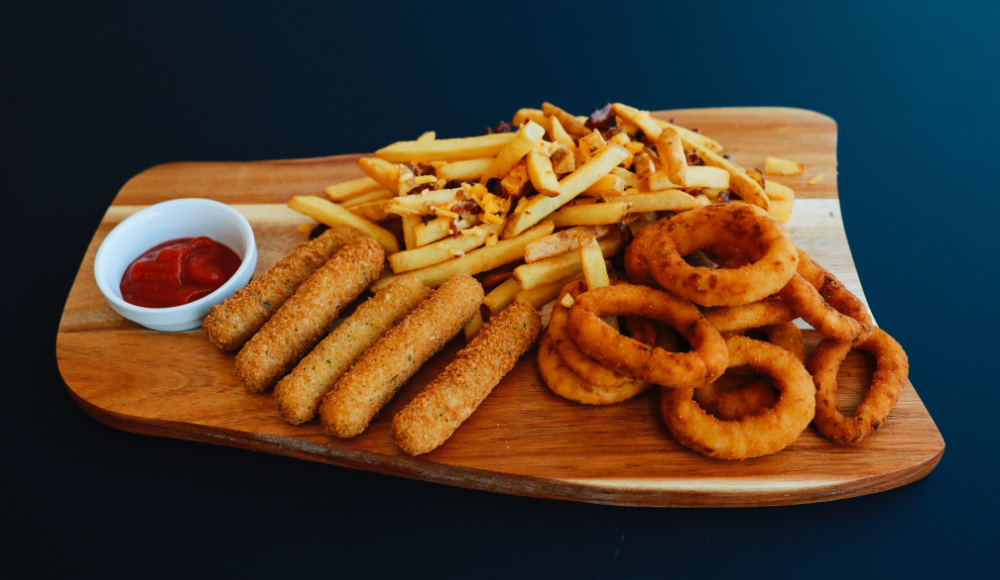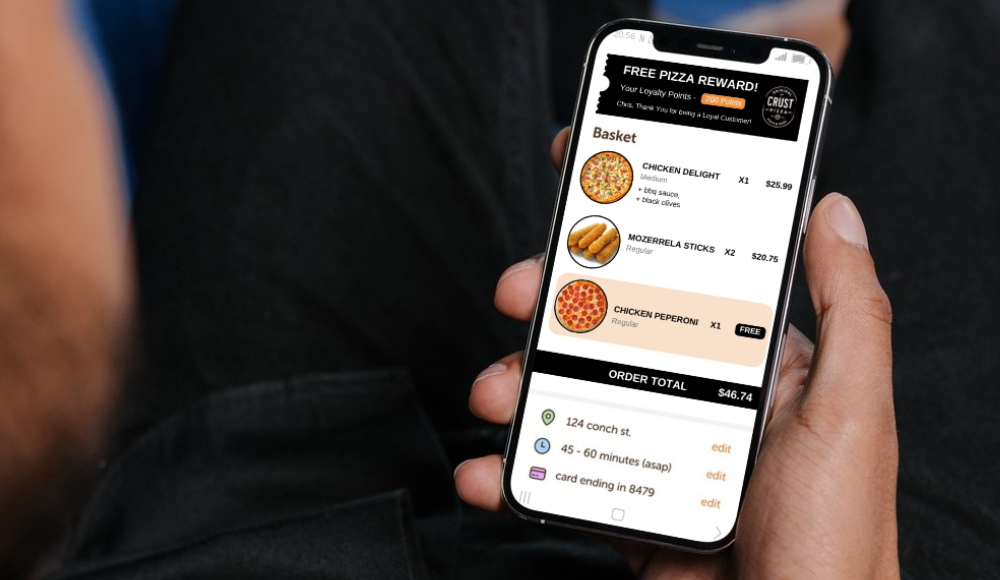Hi, I’m Greg, a restaurant marketing expert at Air Platter. Back when I ran a small restaurant chain, I thought I had it all figured out. But it wasn’t until I sold the business and took a step back that I realized the real game-changer—the one thing that made all the difference between barely breaking even and serious profitability: food costs. It’s something that can either make or break your restaurant, and most owners don’t realize how big of an impact it can have.
Now, as a marketing consultant for restaurants, I’ve seen countless businesses struggling with the same mistakes I made early on. The good news? I’m here to help you avoid them and share what really works. Today, I’m going to show you three powerful strategies to control your food costs and unlock massive profits—no matter if you’re just starting out or have been running your restaurant for years.
Trust me, these 3 tips are game-changers. Implement them, and you’ll see your restaurant not just surviving but thriving.
Why Are Food Costs So Important?
If you ask any successful restaurant owner what the most crucial cost to watch is, they’ll likely tell you: food cost. And there’s a good reason for that—managing it well can be the difference between being super profitable or heading towards bankruptcy.
The restaurant industry is tough, and profit margins are thin. Once you add up food costs, labor, rent, and other overhead, you’re typically left with just 15% profit on a good day. But here’s the kicker: if you keep your food costs low, you can easily double or even triple that profit margin.

I’ve seen it happen countless times. A simple adjustment in how you calculate and manage your food costs can transform your business from just getting by to generating serious profits.
How to Calculate Your Food Costs
Let’s break it down. Calculating your food costs doesn’t have to be a complex task. In fact, it’s straightforward if you follow this simple formula:
Purchases (food cost) ÷ Sales (revenue) × 100 = Food Cost Percentage
For example, if you spent $3,000 on food this week and your total food sales amounted to $12,000, you’d divide $3,000 by $12,000, which gives you 0.25. Multiply that by 100, and your food cost percentage is 25%.
At this point, you might be wondering: “Do I need to track every item in inventory to get a more precise number?” My recommendation? Not unless your restaurant is pulling in more than $2 million per location. For smaller operations, the time and effort involved in maintaining a detailed inventory system just don’t pay off.
Instead, focus your energy on methods that will have a greater impact on your bottom line without bogging you down in endless hours of inventory management.
And here’s where it gets exciting—the next few strategies I’m about to share will completely change how you approach food costs. Get ready to take your profits to a whole new level.
Secret 1: Design Your Guest Experience Around Money Makers
One of the most effective strategies I used in my restaurants—and what I see top operators doing—is designing the guest experience around your highest profit items.
Let’s take Subway as an example. At first glance, you’d think their profits come primarily from selling sandwiches. But in reality, a significant portion of their profits comes from the extras—the chips, drinks, and cookies they sell alongside their subs. These add-ons carry much lower food costs and much higher margins.
For instance, a sandwich may have a food cost of 30-35%, but a bag of chips or a cookie? That’s closer to 10-15%. When customers add chips, a drink, or dessert to their meal, Subway’s profit margin on that order jumps dramatically. The sandwich gets people in the door, but those extra items are where the real profits are made.
I applied this same strategy when I ran my steakhouse. While the steaks were the stars of the menu, the real profit came from wine sales. Our steaks had a food cost of around 40%, but the wine? That had a food cost closer to 20%, meaning that for every glass we sold, we made double the margin compared to the food. By focusing on upselling wine—using strategies like featuring it heavily on the menu and training staff to recommend it—we not only improved our profits, but we also created a more premium dining experience for guests.

So, think about how you can structure your menu and service to promote those high-profit items like beverages, desserts, or sides, and you’ll see the same results in your profitability.
Secret 2: Use Premium Pricing to Control Food Costs
Now, let’s talk about pricing. As a restaurant owner, it’s easy to feel pressure to compete on price, especially when big chains like Burger King, Chipotle, and Pizza Hut are offering meals for dirt cheap. But here’s the thing: you’re not any of those, and you shouldn’t try to be.
These large chains can afford to price their meals low because they’re buying food in massive quantities. As an independent restaurant, you need to embrace and be proud of your premium pricing.
I always advise setting a pricing strategy where your entrées are priced at least three times the cost to make them. Even better, consider having a few dishes that are priced ten times higher than their food cost. For example, mozzarella sticks—an item that costs around $0.70 to make—can easily sell for $7. That’s a 10% food cost, leaving you with $6.30 in pure profit for every order.
While premium pricing may feel intimidating at first, customers naturally associate higher prices with better quality. In fact, studies have shown that people often rate the taste of a more expensive item higher, even when it’s identical to a cheaper option.
If you’re providing an exceptional experience and quality food, don’t hesitate to charge what it’s truly worth.
Secret 3: Run Proper Promotions to Drive Sales Without Losing Money
Promotions can be an incredibly powerful tool for driving sales, but if you’re not careful, they can quickly turn into a profit-draining trap. A buy-one-get-one-free deal or giving away free food through a loyalty program might seem like a great way to attract more customers, but without a clear understanding of your food costs, you could easily be giving away thousands of dollars in revenue.
That’s why having a handle on your food costs is crucial before launching any promotion. Once you know your margins, you can design smart, effective promotions that actually help you increase sales without eating into your profits. Here’s how:
- BOGO Deals: Buy-one-get-one-free promotions work wonders on low-cost, high-margin items like pasta or bean burritos. If the food cost for an item is 20% or less, you can afford to give one away while still maintaining a healthy margin. That means more sales without sacrificing profitability.
- Loyalty Programs: Points-based loyalty systems are another fantastic way to boost customer frequency and sales. But here’s the key: only give away low-cost, high-margin items. For example, if a customer earns a free appetizer that costs you $1 to make but has an $8 menu price, they’ll feel like they’re getting a great deal—and you’ll keep your margins intact. Guests feel rewarded, and your restaurant doesn’t take a hit on expensive giveaways.

This is exactly why I’m a huge advocate of using a sophisticated loyalty program, like the one we’ve designed at Air Platter. Our system helps restaurant owners build a points-based structure that not only rewards customers with valuable perks but also ensures you’re giving away items that keep your costs in check. Even better, Air Platter also converts highly performing online ordering websites for independent restaurants, making it easier for you to maximize sales from direct orders.
By steering loyalty rewards toward high-margin items, you’re creating a sense of value for the customer without damaging your profits. Plus, by integrating a loyalty system into your restaurant’s app or website, you encourage guests to order directly from you—bypassing third-party platforms like DoorDash and UberEats, which can significantly cut into your margins.
Running smart promotions with a strong understanding of your food costs can bring in more business, make customers feel special, and keep your profits healthy. And with a system like Air Platter’s, you’re not only driving sales—you’re building customer loyalty and converting more online orders for the long term.
Final Thoughts
By the way, as you’re designing your guest experience around promoting these high-profit items, if you’d find it helpful to have me or one of my colleagues review your menu and give you personalized ideas based on what we’ve seen work best across thousands of restaurants, feel free to book a free consultation. We’ll take a look at your online menu and provide tailored suggestions on how to maximize your profitability based on your specific cuisine and offerings.
Curious About Your Restaurant's Online Potential?
Take this quick quiz to find out how much you could improve your earnings with a stronger website and see how third-party apps may be impacting your bottom line.
Take The Quiz




I’ve always been aware of how crucial food costs are, but it’s easy to underestimate just how much small adjustments can impact profitability. We started focusing more on upselling high-margin items last year, like desserts and drinks, and the results have been impressive. Your insights on premium pricing are interesting—I’ve been hesitant to go that route, but it might be time to test it out. Thanks for the detailed breakdown!
Great read, Greg! When I was running a small seafood restaurant, we struggled with food costs, especially when sourcing fresh ingredients. What helped us was taking a hard look at the menu and removing dishes that had high food costs but weren’t popular enough. I also agree with your point on loyalty programs—we implemented one last year, and it’s been fantastic for driving repeat business without hitting our margins too hard.
I completely agree with the importance of controlling food costs—something I learned the hard way after a few years in business. We’ve been pretty good with calculating our food cost percentage, but I love the idea of focusing promotions around low-cost, high-margin items. It’s an easy way to boost sales without sacrificing too much in profits.